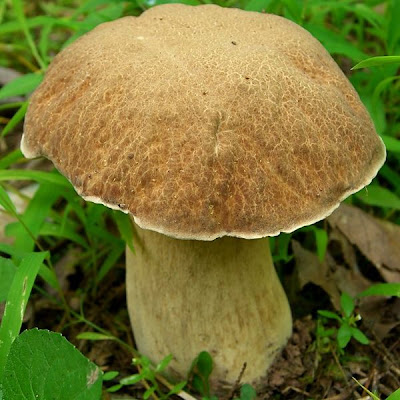 |
| Out in the country with my dad almost 30 years ago (Alberta, Canada) |
Our next mushroom forager is Gerald Sylvester, my dad. He is a retired teacher and has been a dedicated mushroom foraging for 7+ years. I have Gerry to thank for cultivating my interest in mushroom picking, an activity we did in the summer in Alberta and Ontario. Here Gerry shared some tips from his mushroom expeditions in Alberta as well as a family favorite recipe "Mushrooms on Toast"; please write any questions for Gerry in the comments section at the end of this post.
Want to learn more about foraging in other regions? Check out these posts from foragers in Washington and Georgia.
1. Can you describe the process of selecting
the right mushroom foraging spot in Alberta?
The spot I use was found by accident, I was on a camping weekend with some friends and we went out to Fallen Timber Campground in the Waiporous region north west of Calgary (about 65 kilometers from my house). A family was there going through the campground with a basket picking mushrooms. I followed them and talked to the father.
There are also foraging spots right in the city of Calgary. A tennis player I know mentioned that there are some morels growing only about two kilometer from my house. He has collected some, but on several foraging attempts, I had no luck finding any.
2. Many people tell me they are afraid to go
picking because they don't know how to properly ID edible wild mushrooms. How
did you learn to ID edibles?
There are a lot of poisonous
mushrooms out there and you have to be very careful. The family I that was
picking mushrooms with that day instructed me on 4 or 5 species, but I only
remembered two. They were Boletes and Chanterelles. Of these two, I have been more certain with boletes because they are unique once you have become acquainted with them. On the other hand, you have to look carefully with chanterelles because there are false chanterelles that look exactly like the real ones, and the false ones should not be eaten.
 |
| King Bolete (Jason Hollinger, wikimedia commons) |
3. What kind of permits are required to harvest
wild mushrooms in Alberta?
As far as I know, there are
no permits required.
4. Not many people forage for their own food,
so I'm wondering what are your motivations are to do so?
I have been interested in harvesting wild mushrooms for many years, but have always played it safe and not taken any chances. Since I have had some successes, I am encouraged to continue because it is thrilling to know that one may be able to live from products found in the wild.
The reactions I get from family and friends about harvesting mushrooms vary. Some people would never try wild mushrooms, and don’t want to know anything about them. Others are just as excited as I am. Since my first trip when I learned to I.D. Chanterelles and Boletes, I have continued to forage with friends. As a result I have learned to identify several other species, learned from others. They are: Coral Mushrooms, Hen or Chicken of the Woods, Shaggy Mane, Oyster Mushrooms, along with King Boletes and Chanterelles.
 |
| Hen of the Woods (wikimedia commons) |
5. What do some of the wild mushrooms you pick
in Alberta taste like?
There is a similarity in taste for a lot of
wild mushrooms, but then, chanterelles have a distinct aroma that is unique.
The texture of a lot of mushrooms are quite similar. Most people fry up the
mushrooms, so it is hard to distinguish differences. Boletes have a strong
flavor, and may have some effects on you after eating. In a few instances it
was the case for me.
My favorite mushroom recipe for wild and common
mushrooms is "Mushrooms on Toast"
2 tbs olive oil in a frying pan
1 tbs of butter or margarine.
Fry up all the mushrooms cut into ½ inch halves
or quarters depending on the size you have,
Add some more oil and
Add 2 tbs of flour
Start adding water to make a roux continually
cooking the mushrooms
Add pepper, possibly cayenne, or half a tbs of
a sambal
Onions can be fried along with the mushrooms
Hot peppers can be substituted for the cayenne
You will end up with a thick creamy mushroom sauce that you spoon over a couple pieces of toast. Enjoy!
This was very interesting! I am neither knowledgable nor brave enough to forage for mushrooms and then eat them, especially since I remember my little brother having to get his stomach pumped after a neighbor told my parents that he ate a mushroom (which ended up being untrue).
ReplyDeleteAre there specific things to look out for that are definite indicators that a mushroom is poisonous?
Adorable picture by the way.
Nina
Hi Nina:
ReplyDeleteThat's a good question about definite indicators for poisonous mushrooms. Sorry to say, there are none. You have to be careful, and get expert advice on identifying any mushroom in the wild. Some can be deadly poisonous. I'm not able to answer this question very well, it has to be put to a mushroom expert
Gerry
Hi Gerry: I have made this recipe twice this week with smooth chanterelles from Alabama, and it is quite delicious! Thanks for sharing. -Brian
ReplyDelete